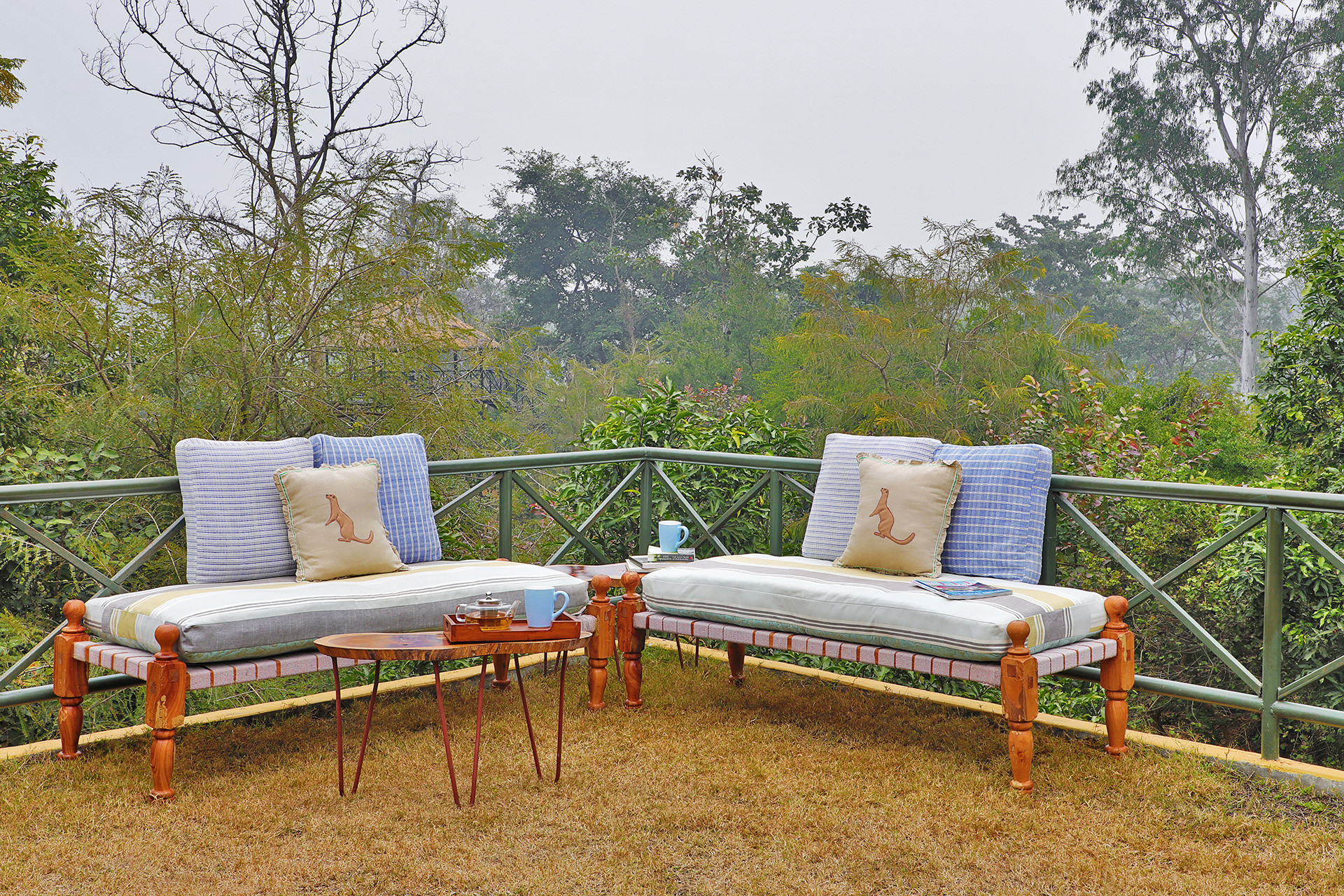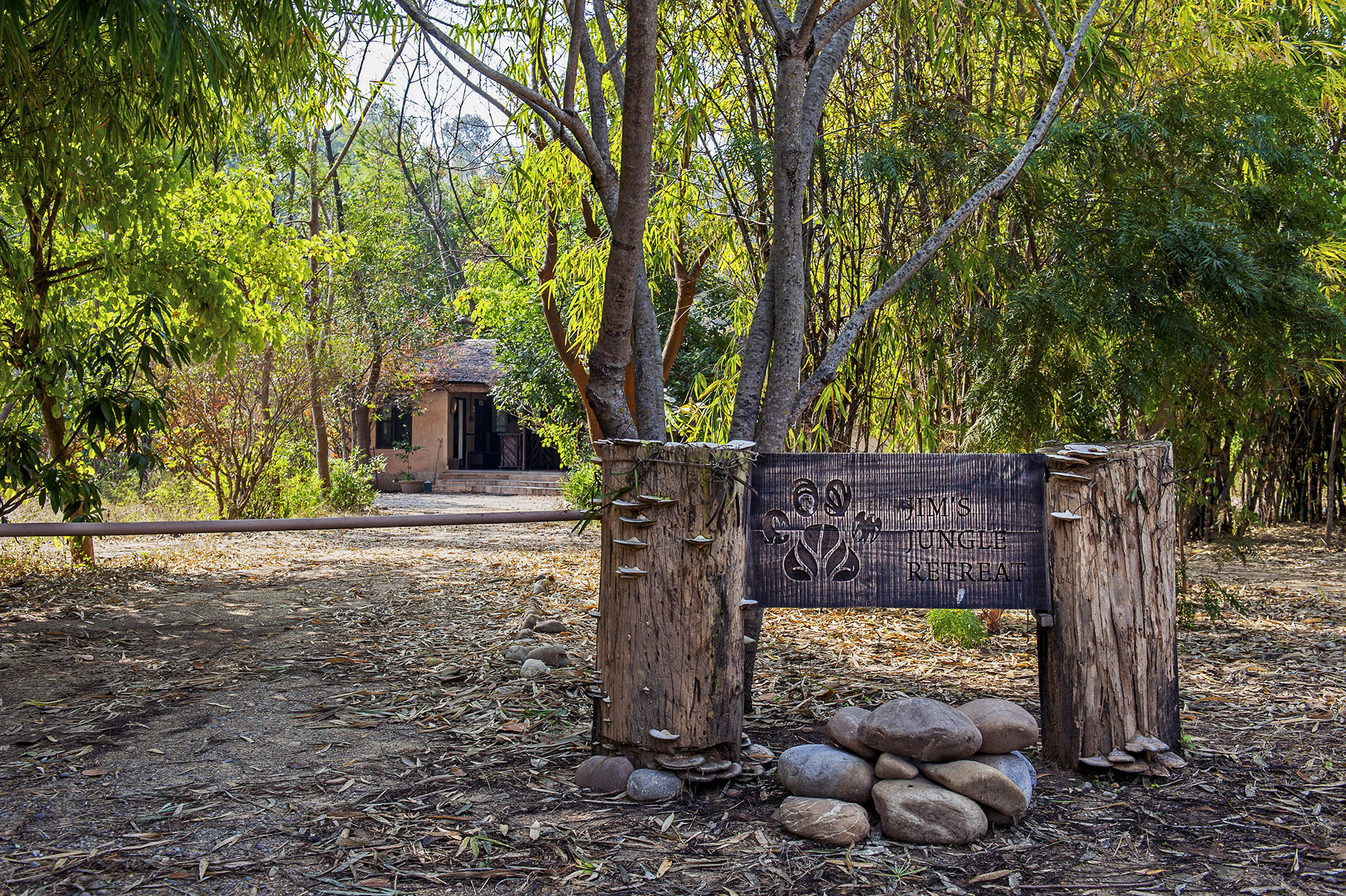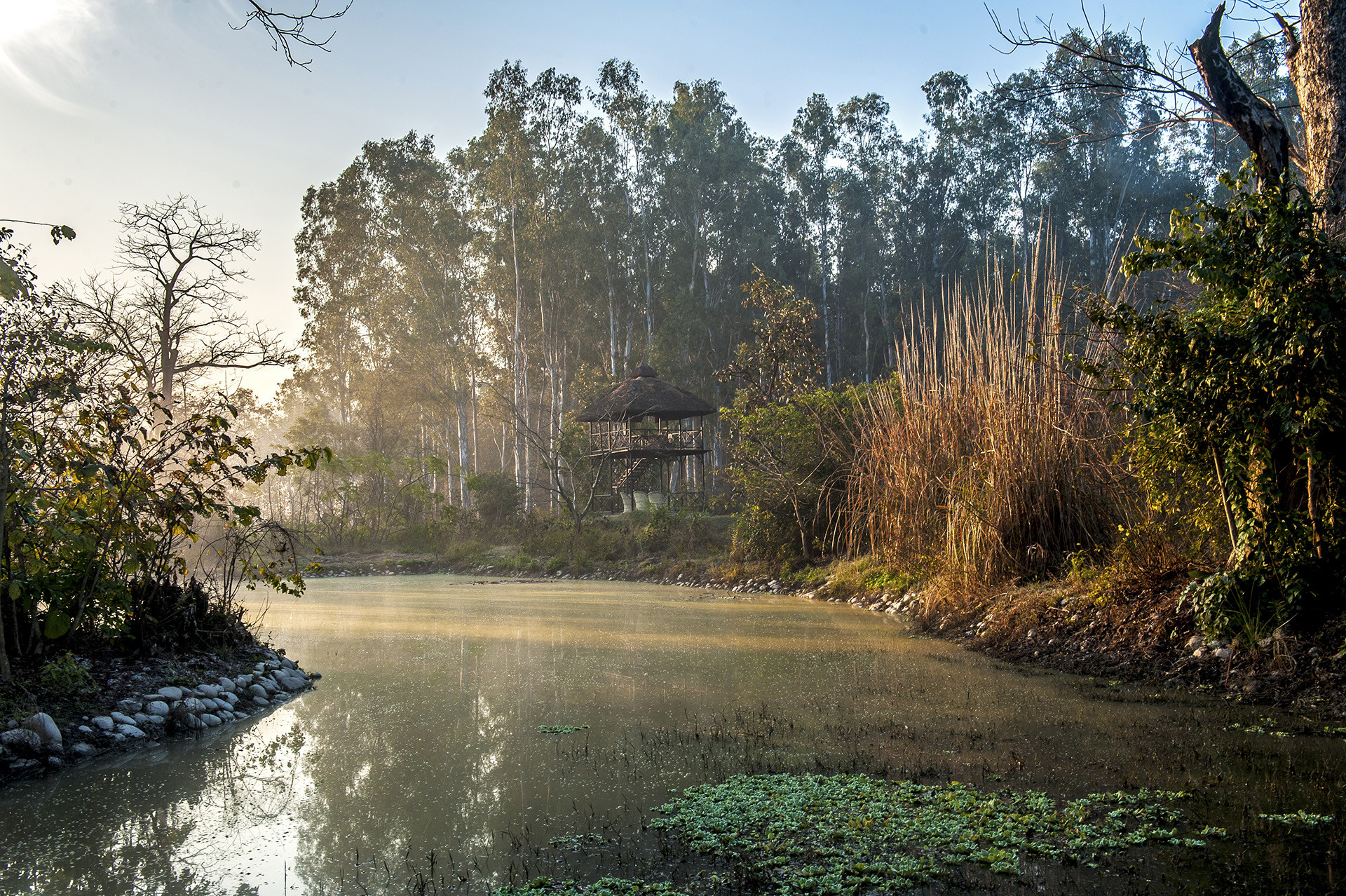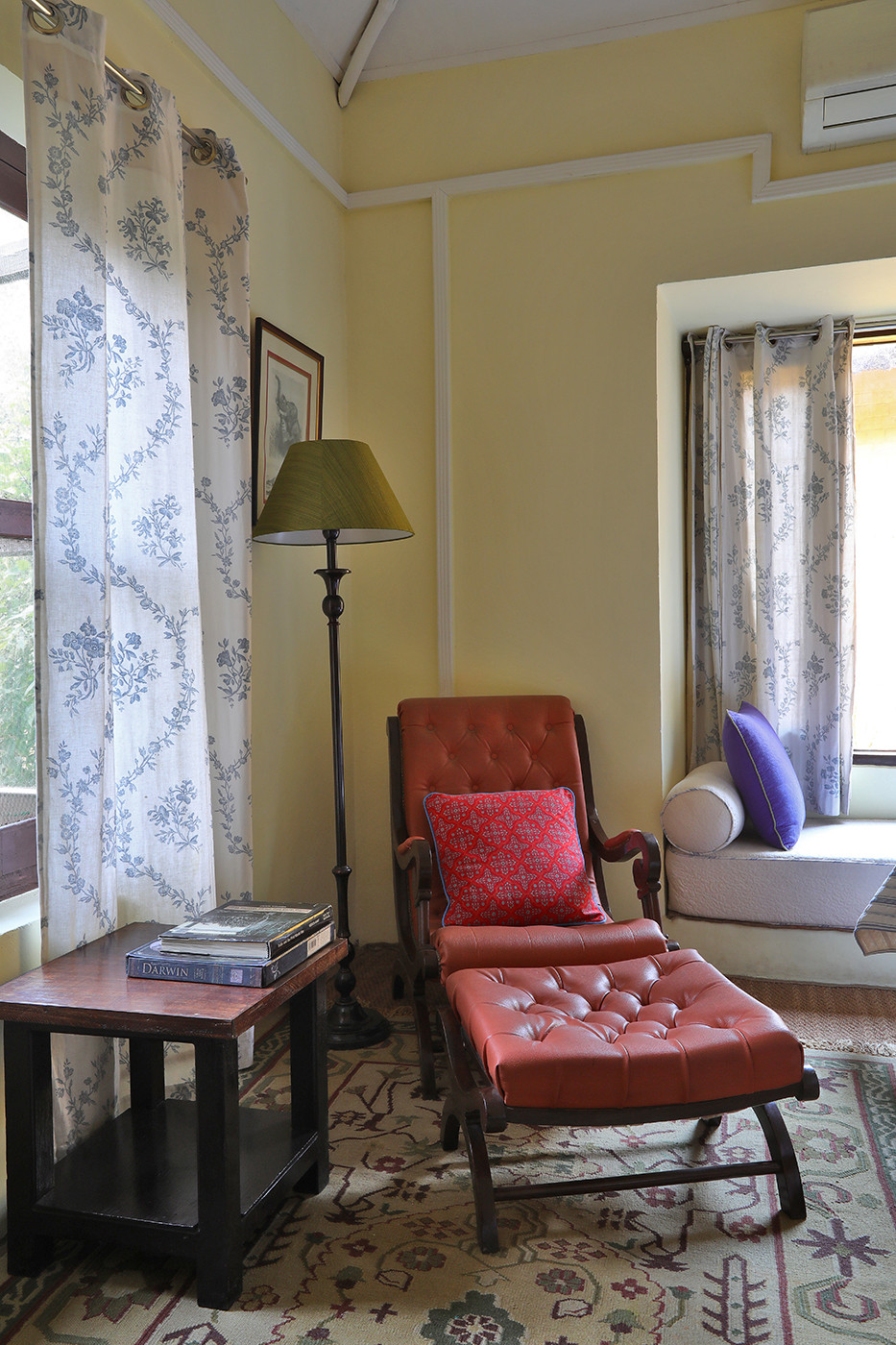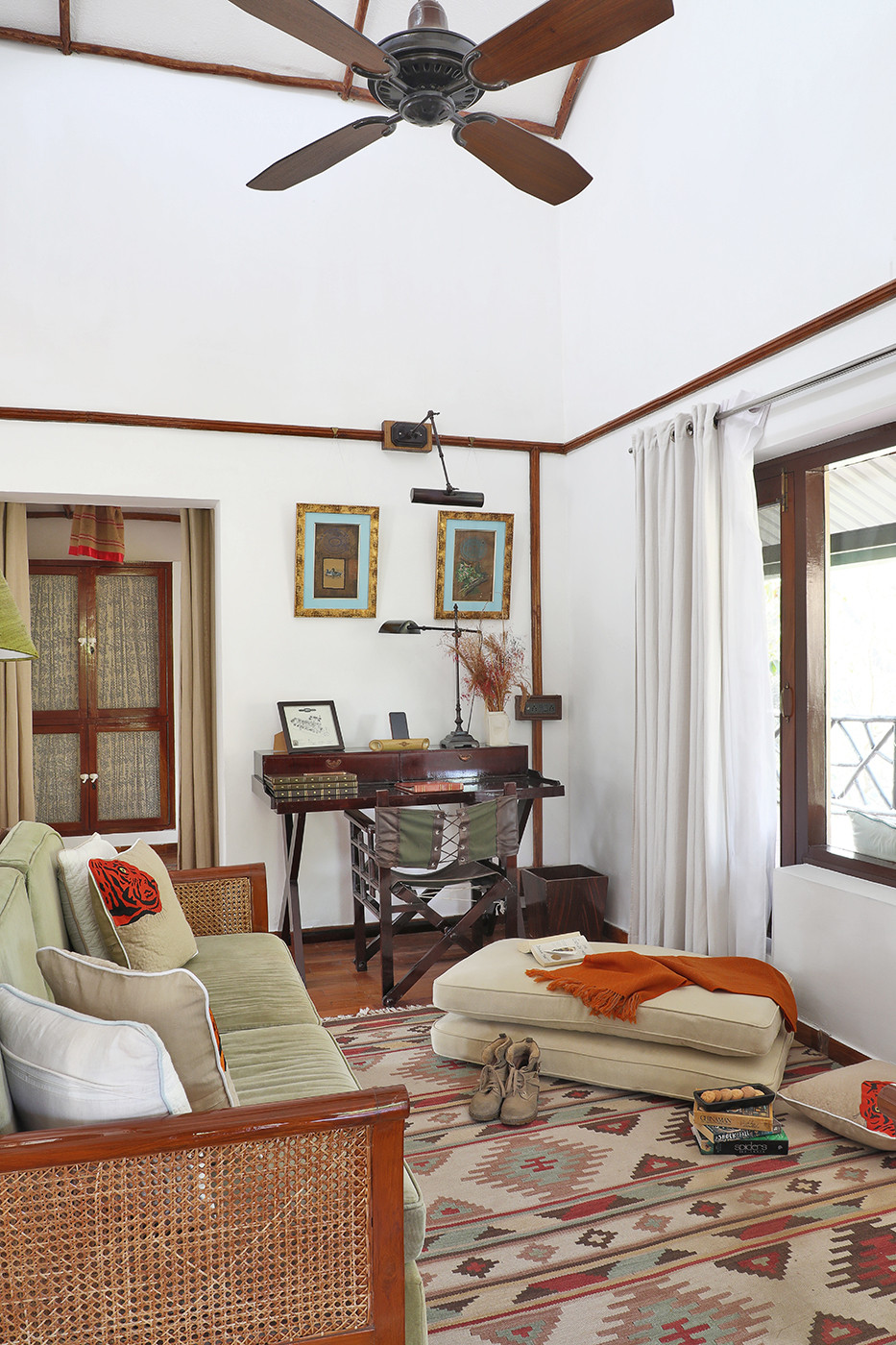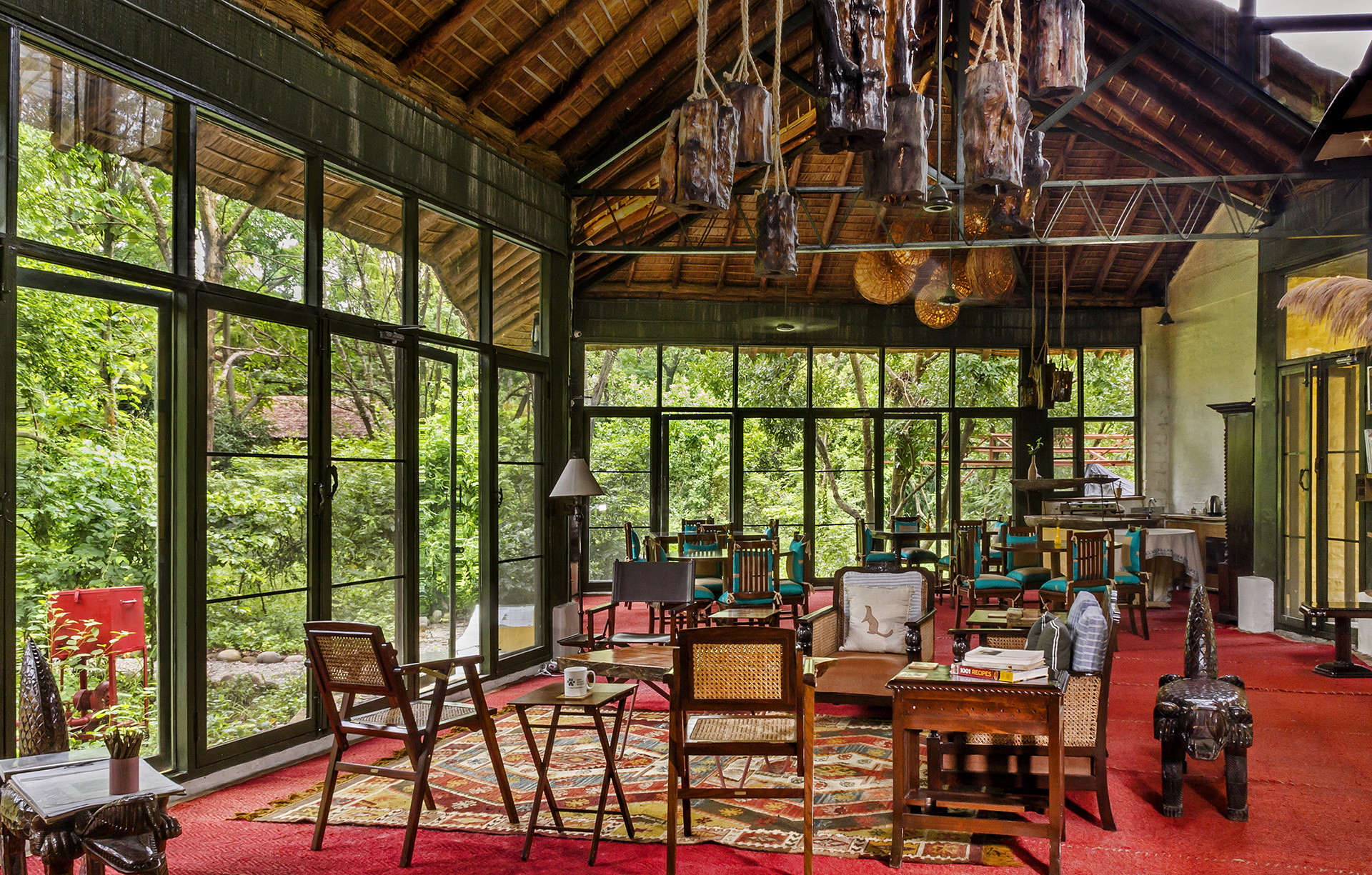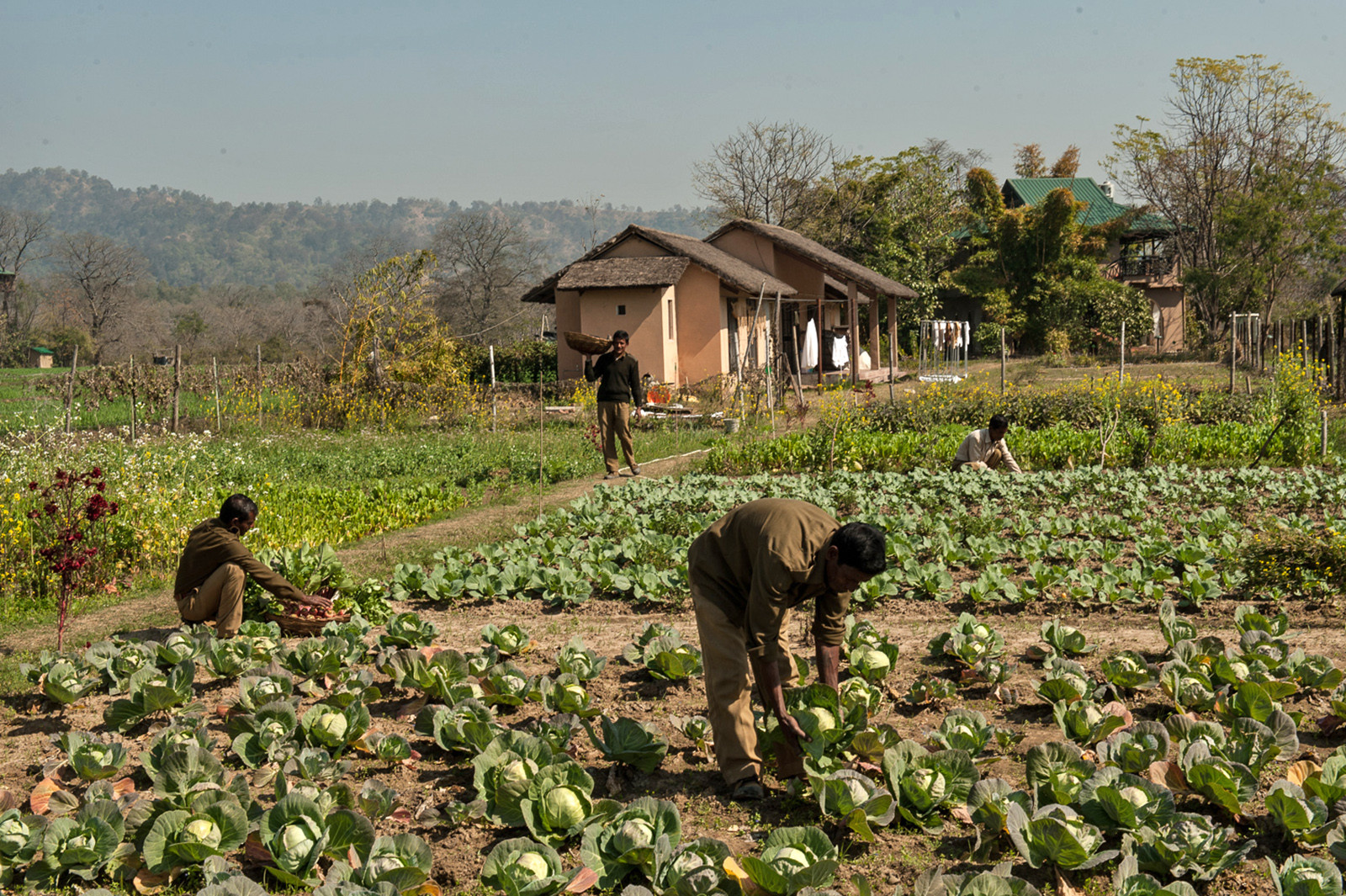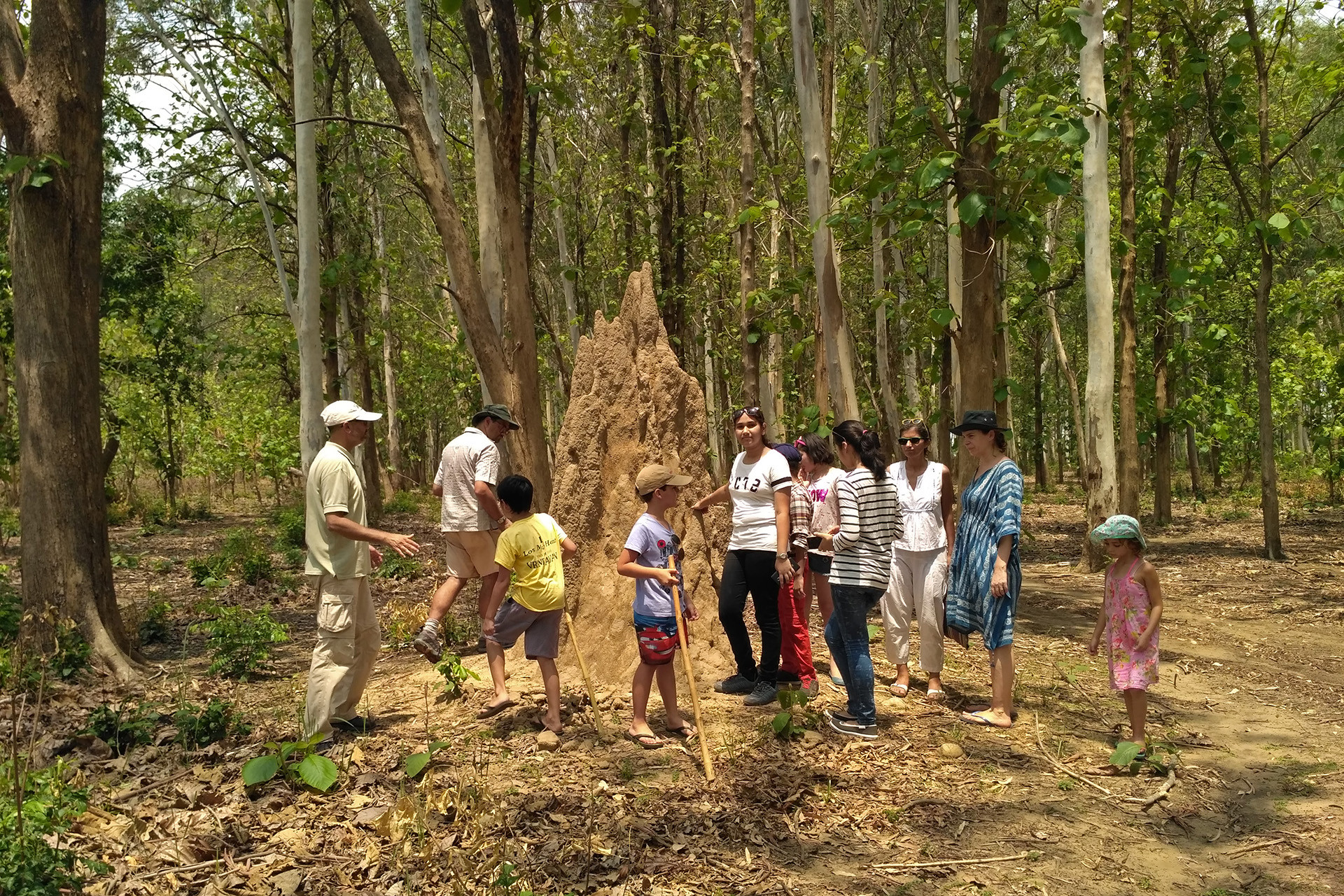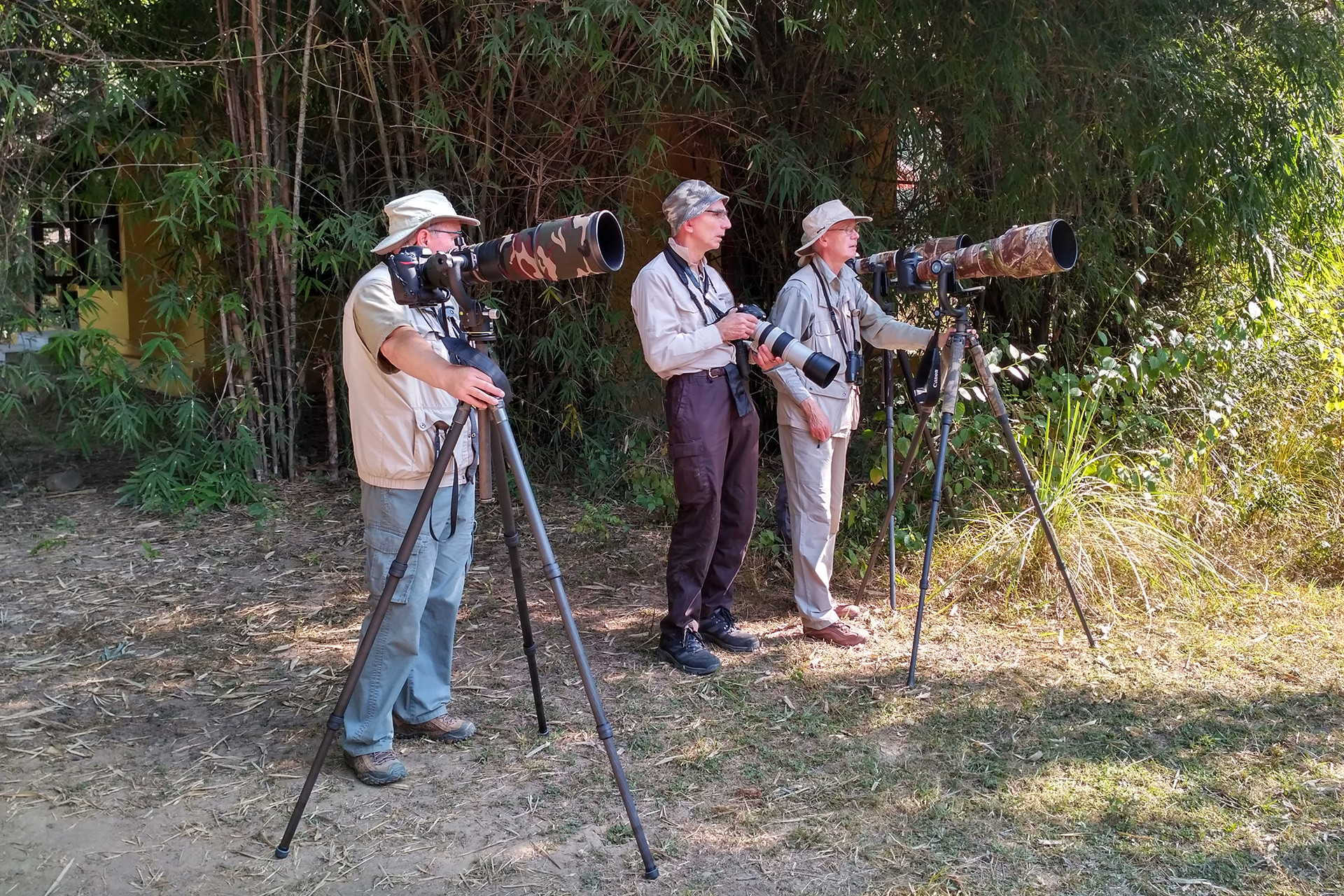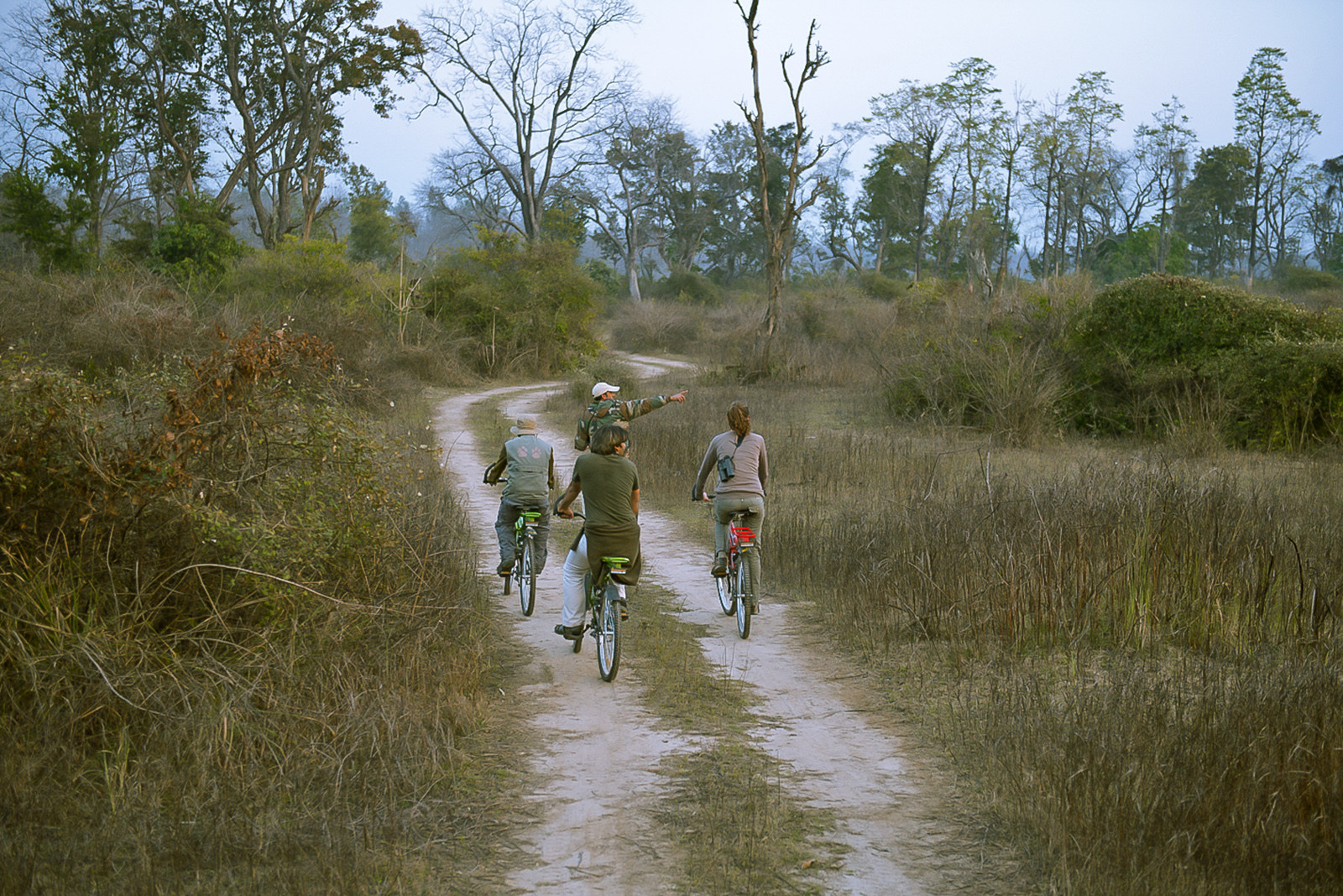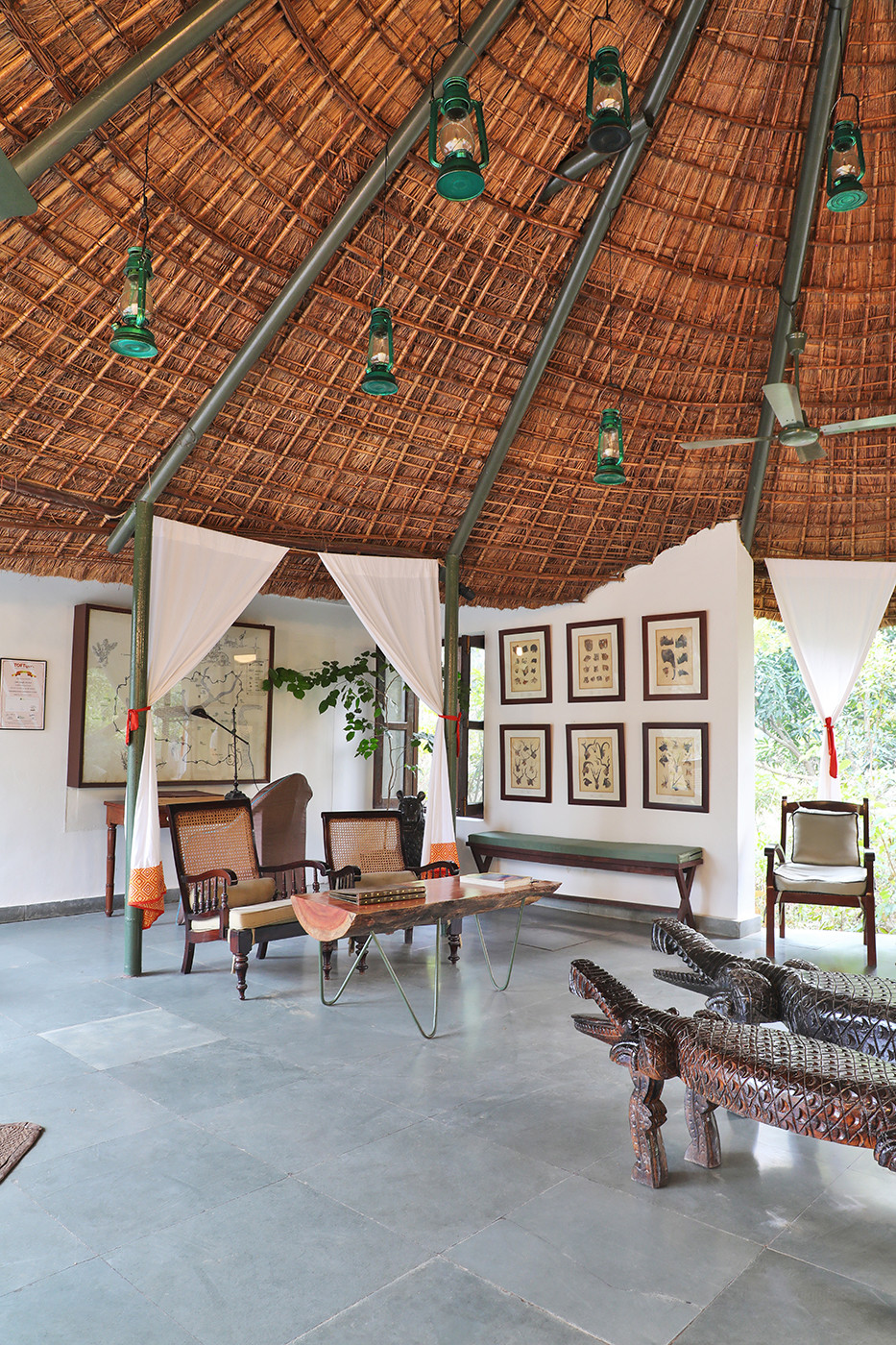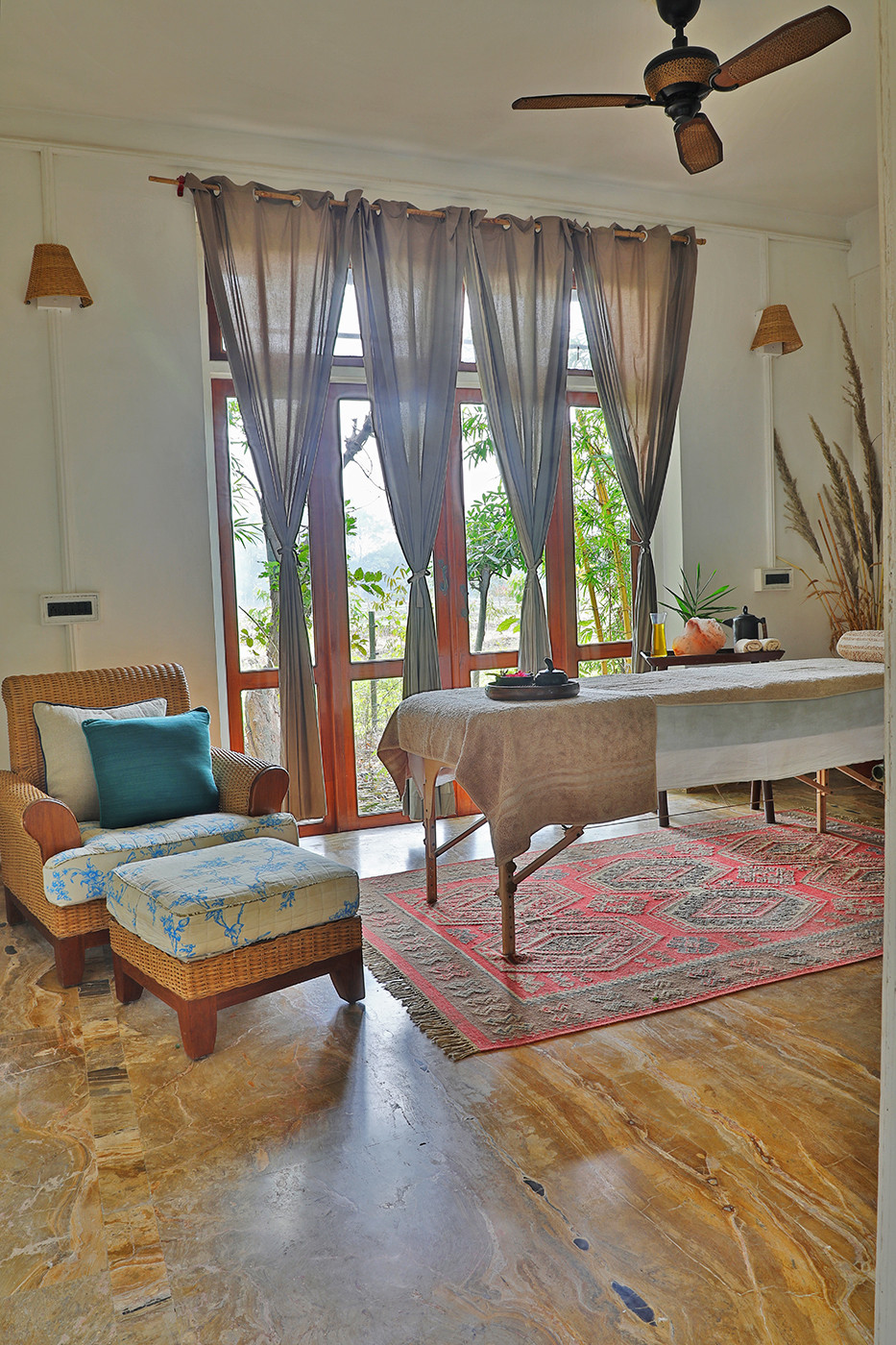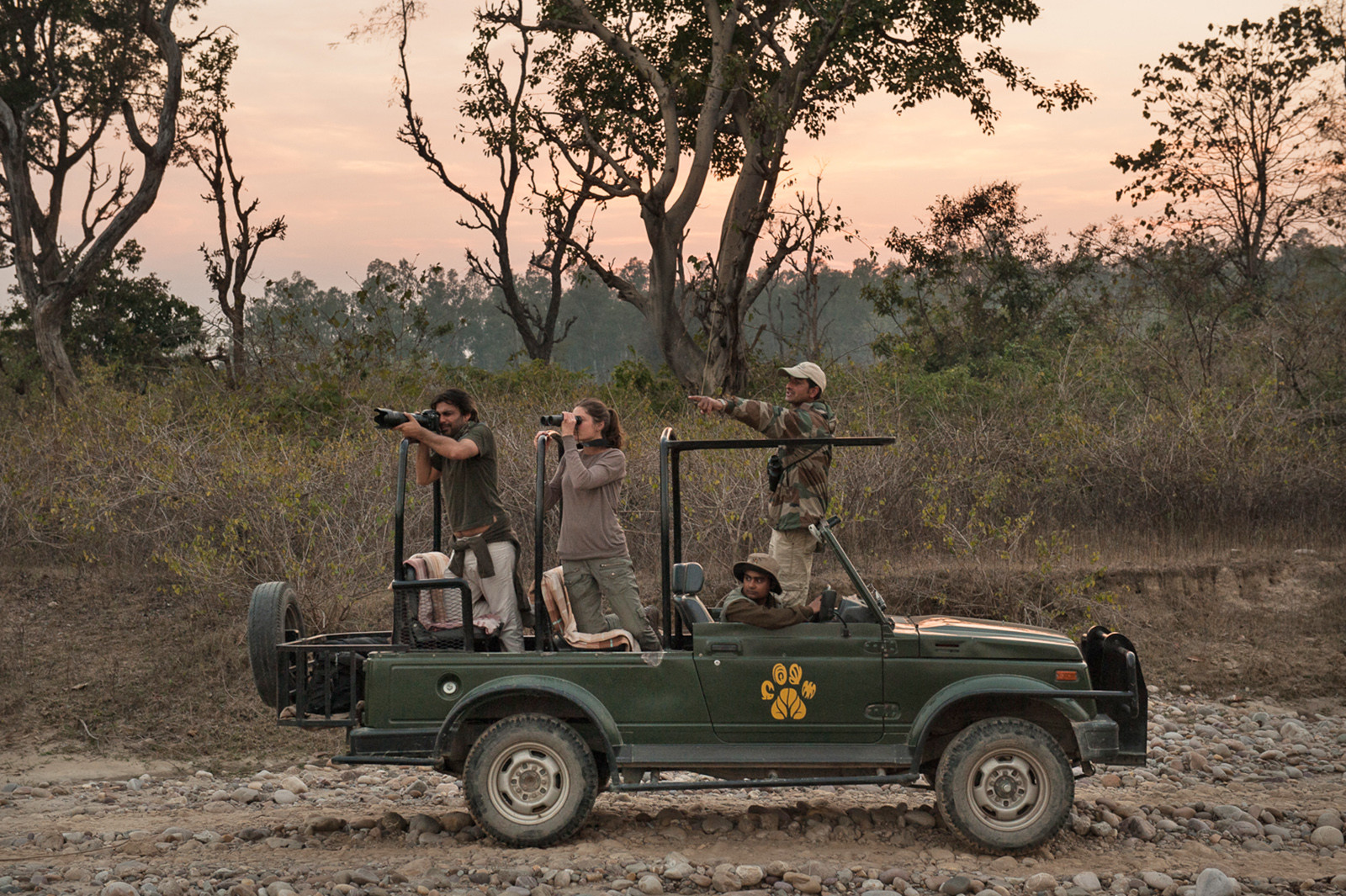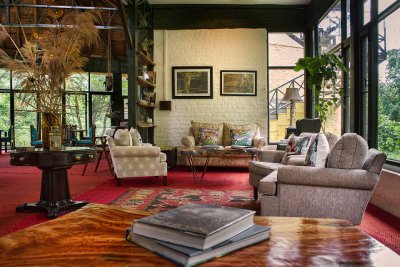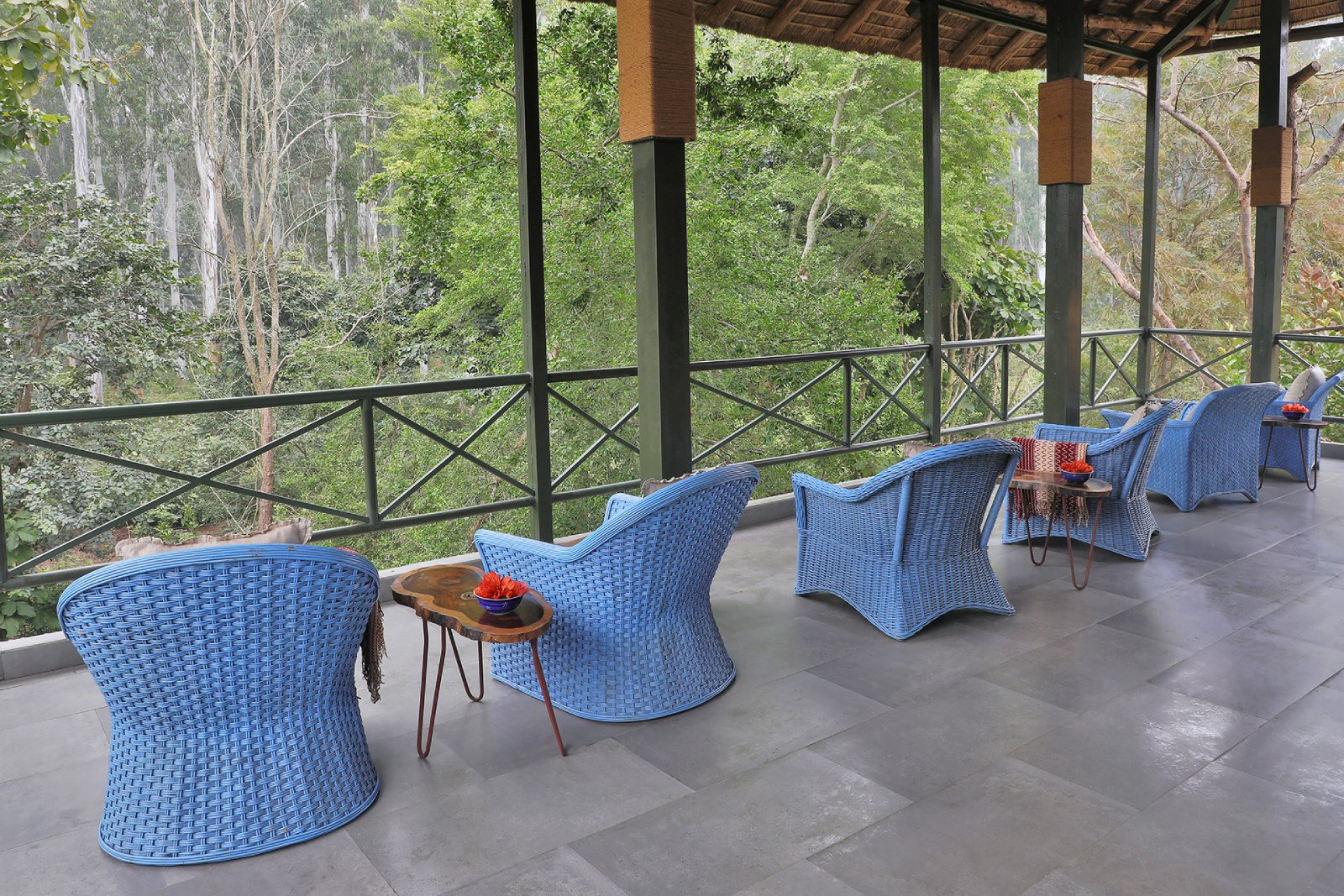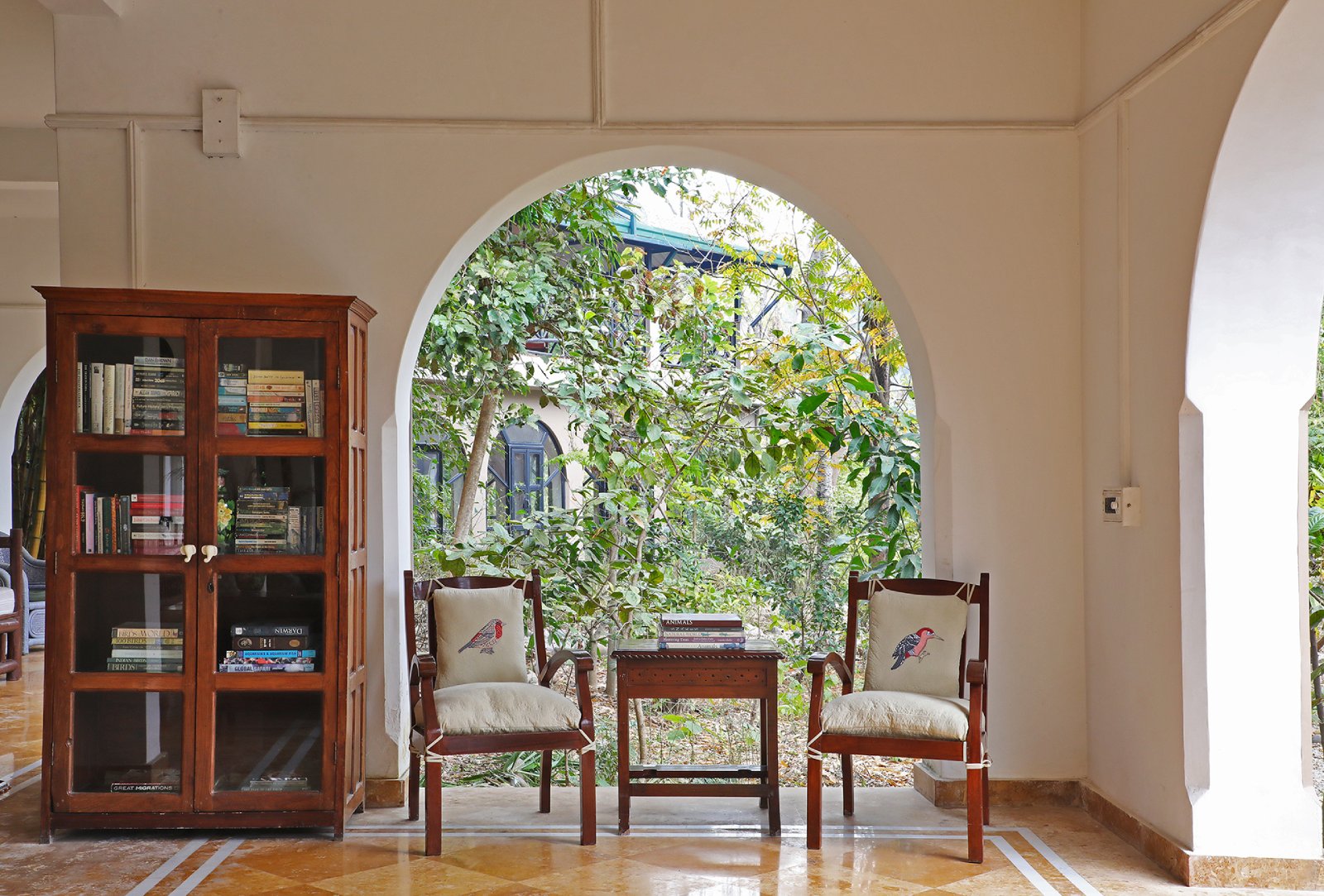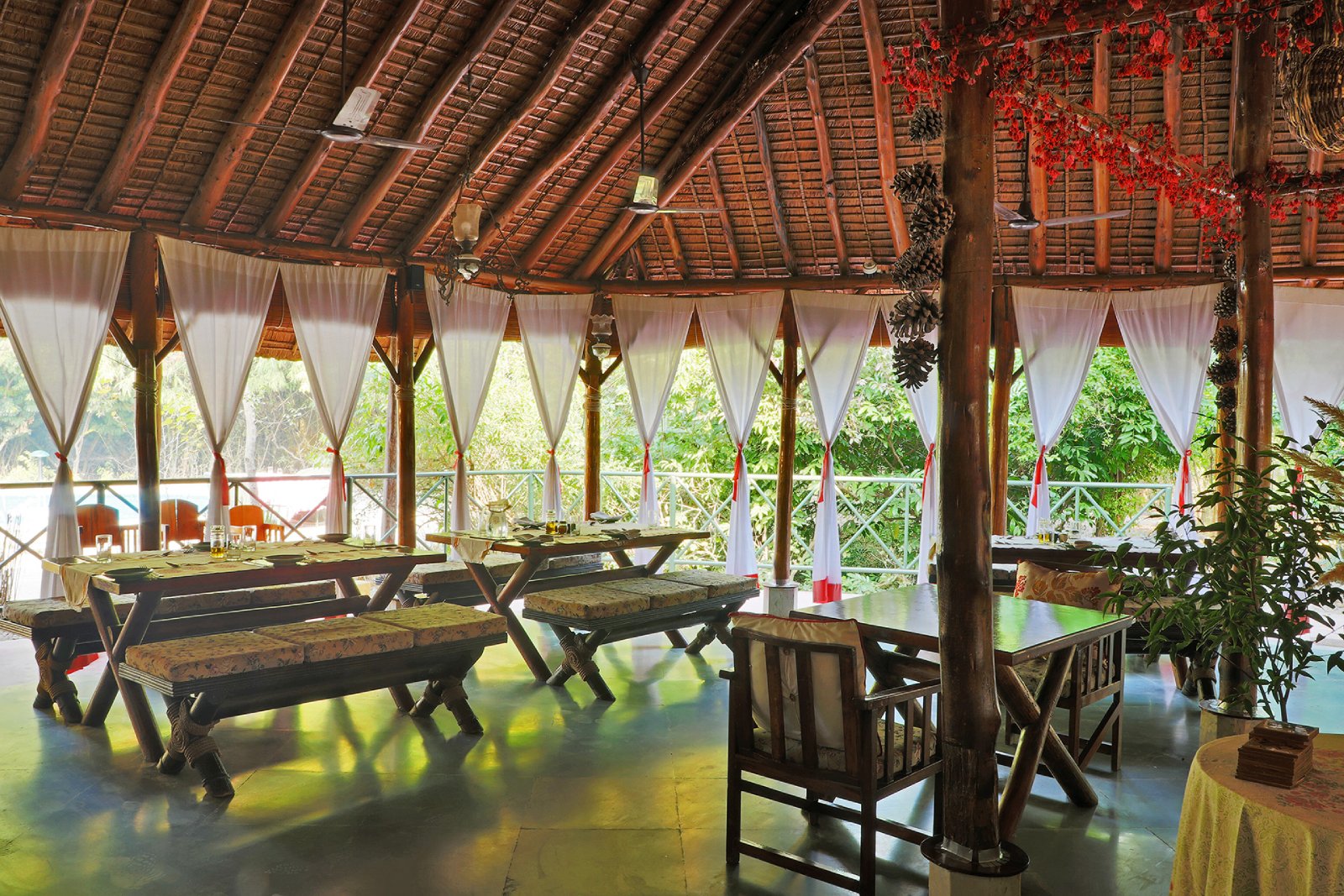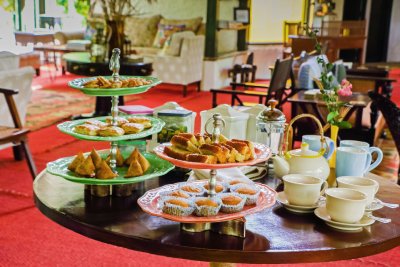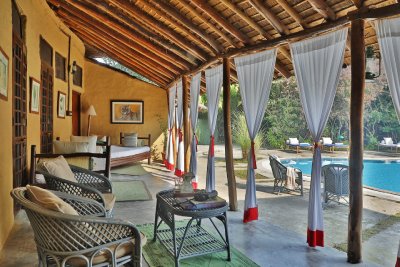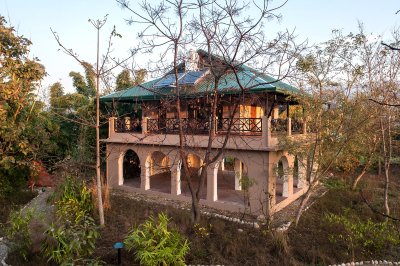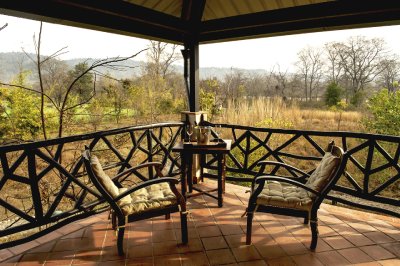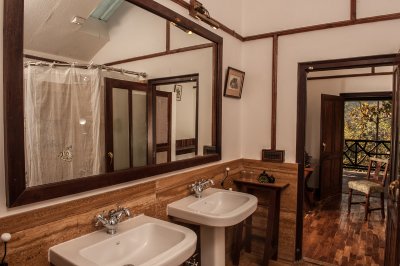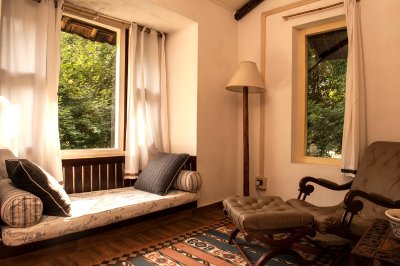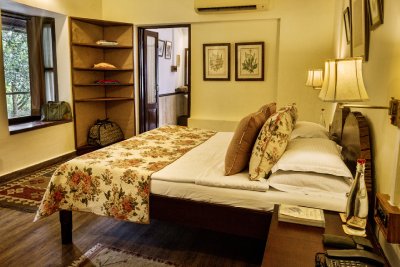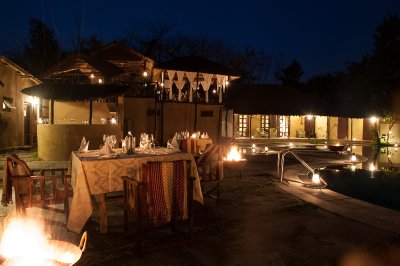Location
Contact
reservations@jimsjungleretreat.com
011- 43516376 | 47537647 | +91-9711789828
@jimsjungleretreat
@jimsjungleretr8
@jimsjungleretreat
Tariff
Packages starting from ₹11,500
See | Do
- Private safari to Jim Corbett National Park
- Birdwatching and Butterfly Walk
- Mahavan Trail within the property
- Young Ranger’s programme for children
- Morning walk and cycling tour to Dhela village
- Specially curated Corbett Heritage Trail
- Birding drive to Tumaria Reservoir
“This tiger had killed two Nepalese labourers. Of course, you didn’t have camera traps then, so you couldn’t really know for sure and identify who it was but one suspected it was Dhitoo (a tiger who was extremely dheet, or stubborn). Anyway, we were on elephant back, and there was Dhitoo, and my mother was on an elephant who was extremely nervous. She was trying to take photographs of the tiger when the elephant suddenly bolted. I saw my mother go down like this (gesturing a falling domino block), and hang off the elephant. The only thing that saved her was her foot which she had lodged inside the rope that ties the haudi (the bed that you sit on). The tiger was only 20m away.”
I watch my colleague’s eyes widen and her eyebrows lift as she slowly breaks into a smile, curious to know what happened next. Snuggled up on the upper deck of Carpet Sahib Cafe (locals weren’t able to pronounce Jim Corbett’s name, earning him the moniker of Carpet Sahib), sipping coffee and wiping cake crumbs off our gleeful faces, we listen to Daleep Akoi of Jim’s Jungle Retreat as he narrates his favourite stories from Corbett. The shrill cackle of a White-naped Woodpecker coupled with the reverberatory rhythm of her drumming beak float in from the forest in front of us, which expands into the buffer zone of Jim Corbett National Park. Taking a sip from his cuppa, pausing purposefully, Akoi smiles and continues, “Dhitoo then looked up, as if to say, what the hell is that, and tried to make a charge for the elephant, that was already freaking out. Thankfully, mahouts of the other elephants quickly sprung into action, made a lot of noise and pulled my mother up. Anyway, she wasn’t eaten up! A couple of months later the tiger was captured and sent to the Kanpur zoo.”
Jim’s Jungle Retreat (JJR) was established by Inder Pratap Singh Akoi, Daleep’s father, in 2005 after he bought a piece of agricultural land in Dhela, the village he had visited as a child in the ‘50s. His earliest recollection of the region was an elaborate shikaar (hunt), where his maternal uncle had hired a hunting block in the forest. Mr Akoi though was more interested in photography than killing. Over the years, through regular expeditions to the forest, he recognised man’s inexorable link with the animal world and has created an endless photographic repertoire of Corbett’s stupendous wildlife. He even spent his honeymoon at the park in 1973 during the launch of Project Tiger.
Bordering the southern forests of Jim Corbett National Park and a seasonal river that comes to life during the monsoon, the 15-acre agricultural field has since been transformed into a thriving forest that overwhelms with its sheer diversity and strength in numbers of flora and fauna. Water bodies, grasslands and other open spaces lead to clumps of shrubs and trees planted precisely to encourage the nesting of avian life found in the region. The nearly 100 species of trees within the property are home to the Blue-bearded Bee-eater, Oriental Pied Hornbill, Black-hooded Oriole and Asian Paradise Flycatcher to name a few. Indian Grey Mongoose, Small Indian Civet and the Indian Porcupine can be regularly sighted within the estate. The forests and the riverbed adjacent to the lodge host grazing deer, wild boars, jackals and the occasional tiger or leopard. During their seasonal migration, elephants trumpet their arrival and can be sighted on walks.
This verdant landscape also hosts 18 individual residences in three accommodation styles – eight Jungle Cottages, four Family Cottages and six Jungle Lodges – providing guests with the privilege of experiencing and celebrating the Indian jungle from tiny pockets of secluded luxury. The residences emulate the houses of the local Gujjar community, with thatched roofs and mud walls, painted in muted colours of beige and white. The Family Cottage offers an additional bedroom compared to the Jungle Cottage and the Jungle Lodge soars 15 feet into the air to offer premium views of the surrounding forests and hills from its expansive decks. The furniture bears the stamp of Kumaoni craftsmanship and extensively uses locally sourced materials. Decorated with century-old lithographs and plates, the interiors are reminiscent of Raj-era hunting lodges. Animal motifs can be seen everywhere you look – an elephant mast door handle, a cuckoo shrike door knocker, embroidered flora and fauna on cushions and pillows.
This aesthetic and luxury extend to the other facilities on campus. Carpet Sahib Cafe is one of the prettiest settings at the estate, with large floor-to-ceiling windows bringing nature indoors into spaces that are embellished with elements inspired by the wild. Lunch is usually served here at the cafe; during winters, it extends outdoors, where a wood oven churns out a steady production line of fresh bread and pizza. High tea is served on the upper floor of the cafe, offering stunning vistas alongside a hot cuppa and other delectables. The Gol Ghar (roundhouse) is another dining space, an open hall where breakfast and dinner are served. The adjoining units of a tandoori hut and machan are abutted by a large swimming pool that is currently out of service owing to pandemic woes. A cosy library at the lodge holds a wealth of books on science and conservation; JJR encourages photography workshops and research endeavours, even offering accommodation to young people who are interested in research in the field of natural sciences, wildlife or conservation.
The idea behind an establishment like JJR was to create employment opportunities for the local community and to utilise the unique wildlife experience it can offer to impart conservation ideals to the tourist audience. “The lodge employs 68 locals thus creating 68 homes who are no longer going into the jungle to make a living, and who are now becoming aware of what the lodge hopes to achieve for the region. For the guests, there are touchpoints everywhere, the history and the cultural lessons put forth are never lectured, it is just us saying that this is our lifestyle and we are happy for you to join in,” explains Daleep.
The lodge is a no-plastic zone, with efficient waste management and reuse habits. The soap dishes at the lodge for example are made from leaves and toothpicks. The individual residences at the lodge are reliant on solar power and plans are afoot to transform this highly-rated eco-lodge into a truly self-sustainable establishment.
While at JJR, there are a number of activities one can indulge in. The Mahavan Trail takes you on a walk within the property grounds, checking up on trails and paths for tracks and signs of animals visiting the retreat; learning about different species of trees, medicinal plants and shrubs and more. Birdwatching and the Butterfly Walk in the company of the head naturalist Manoj Sharma will see you spotting upwards of 50+ species in just under an hour. There are specialised programmes for kids like pugmark-making, drawing and the Young Rangers’ programme which includes a range of topics such as identifying birds, animals, insects and plant species and more.
Outside the estate, the village walk, an hour-and-a-half affair in the morning, will introduce you to the lifestyle of the people living at the edge of the Corbett Tiger Reserve. If one prefers wheels to walking, cycling is another way to experience the daily rhythms of the village and to watch unique bird species, as you will have a naturalist tagging along. Oh, chai and rusk are guaranteed when you make a pitstop at Dhela village. The birding drive to Tumaria Reservoir, and the Corbett Heritage trail where you learn all about Mr Carpet Sahib are two more other specially curated activities. The Boar Canal Trail is another interesting one where you visit the village of Choti Haldwani and walk along the Boar Canal that brings in water to the village from the nearby Boar river. The experience is accompanied with a reading of Corbett’s Jungle Lore and a picnic by the canal.
After a long day on the road, the Jungle Spa is the perfect place to relax, with therapists trained in traditional deep tissue and Ayurvedic relaxation techniques at your disposal. Of course, nothing beats a good meal after a tiring day, and the gastronomical experience at JJR is quite surreal. Mouth-watering Kumaoni and Rampuri food along with family recipes from the Raj-era await, cooked with produce sourced from the retreat's organic farm and village fields nearby.
There is a lot more to do while at the lodge, of course. JJR is only a few minutes from the Dhela and Jhirna zones of Corbett National Park. The lodge arranges safaris if requested in advance, as bookings need to be made and Corbett is easily one of the busiest national parks in the country. The lodge will provide you with a private jeep safari, and a driver and naturalist will accompany you for your visit to the national park. The guides employed at the lodge have been working in the region for the last 20-odd years and are genuine experts. The guesthouses at the park can be quite basic and spare, and the lodge will provide you with the necessary amenities to make your safari experience comfortable. Hot water bags to keep you warm during the winter, carpets for your bedside, torches and more.
“The idea is, you come looking for the tiger and you leave appreciating the forest. Seek the tiger, find the jungle.” Daleep reiterates the lodge’s tagline as we break for dinner. The call of an Indian Scops-Owl can be heard over the din of cicadas as we walk to the Gol Ghar for a lip-smacking meal before we leave early next morning to catch our flight back to Bangalore. Looking back at our last two days at JJR; we’ve had our fill of adventure and wildlife, and we leave with a deeper understanding of the Indian jungle.
